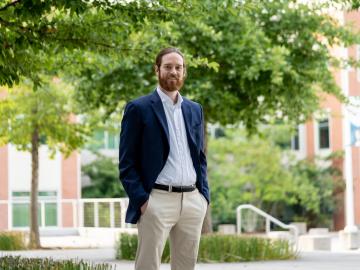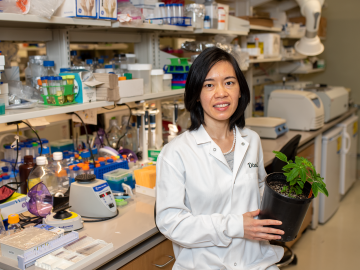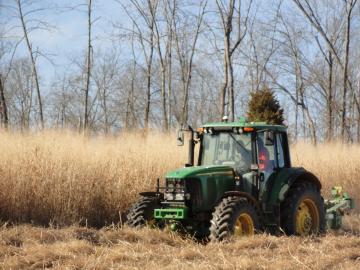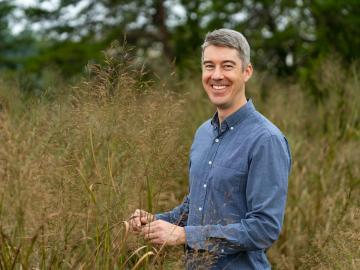
Filter News
Area of Research
- (-) Biology and Environment (59)
- (-) Nuclear Science and Technology (6)
- (-) Supercomputing (38)
- Biology and Soft Matter (1)
- Energy Science (23)
- Fusion and Fission (16)
- Fusion Energy (5)
- Materials (14)
- Materials for Computing (2)
- National Security (4)
- Neutron Science (6)
- Quantum information Science (4)
News Topics
- (-) Chemical Sciences (5)
- (-) Composites (1)
- (-) Environment (65)
- (-) Frontier (17)
- (-) Fusion (6)
- (-) Quantum Science (11)
- 3-D Printing/Advanced Manufacturing (4)
- Advanced Reactors (4)
- Artificial Intelligence (24)
- Big Data (20)
- Bioenergy (27)
- Biology (44)
- Biomedical (15)
- Biotechnology (8)
- Buildings (2)
- Clean Water (8)
- Computer Science (51)
- Coronavirus (10)
- Cybersecurity (2)
- Energy Storage (2)
- Exascale Computing (18)
- Grid (1)
- High-Performance Computing (32)
- Hydropower (5)
- Isotopes (3)
- Machine Learning (10)
- Materials (5)
- Materials Science (12)
- Mathematics (4)
- Mercury (6)
- Microscopy (8)
- Molten Salt (1)
- Nanotechnology (7)
- National Security (4)
- Neutron Science (6)
- Nuclear Energy (18)
- Partnerships (1)
- Physics (6)
- Polymers (1)
- Quantum Computing (11)
- Security (2)
- Simulation (17)
- Software (1)
- Space Exploration (2)
- Summit (24)
- Transportation (3)
Media Contacts

Scientists develop environmental justice lens to identify neighborhoods vulnerable to climate change
A new capability to identify urban neighborhoods, down to the block and building level, that are most vulnerable to climate change could help ensure that mitigation and resilience programs reach the people who need them the most.

Bryan Piatkowski, a Liane Russell Distinguished Fellow in the Biosciences Division at ORNL, is exploring the genetic pathways for traits such as stress tolerance in several plant species important for carbon sequestration

A team of researchers working within the Center for Bioenergy Innovation at ORNL has discovered a pathway to encourage a type of lignin formation in plants that could make the processing of crops grown for products such as sustainable jet fuels easier and less costly.

Surrounded by the mountains of landlocked Tennessee, Oak Ridge National Laboratory’s Teri O’Meara is focused on understanding the future of the vitally important ecosystems lining the nation’s coasts.

Spanning no less than three disciplines, Marie Kurz’s title — hydrogeochemist — already gives you a sense of the collaborative, interdisciplinary nature of her research at ORNL.

A rapidly emerging consensus in the scientific community predicts the future will be defined by humanity’s ability to exploit the laws of quantum mechanics.

A new version of the Energy Exascale Earth System Model, or E3SM, is two times faster than an earlier version released in 2018.

Energy and sustainability experts from ORNL, industry, universities and the federal government recently identified key focus areas to meet the challenge of successfully decarbonizing the agriculture sector

A team led by the U.S. Department of Energy’s Oak Ridge National Laboratory demonstrated the viability of a “quantum entanglement witness” capable of proving the presence of entanglement between magnetic particles, or spins, in a quantum material.

For ORNL environmental scientist and lover of the outdoors John Field, work in ecosystem modeling is a profession with tangible impacts.


